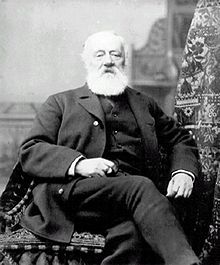Marcadores de Definición. Marcadores de secuencia y orden en el tiempo:
Information technology (IT) is the acquisition, processing, storage and dissemination of vocal, pictorial, textual and numerical information by a microelectronics-based combination of computing and telecommunications. The term in its modern sense first appeared in a 1958 article published in the Harvard Business Review, in which authors Leavitt and Whisler commented that "the new technology does not yet have a single established name. We shall call it information technology (IT).". Some of the modern and emerging fields of Information technology are next generation web technologies, bioinformatics, cloud computing, global information systems, large scale knowledgebases, etc.
In the recent past, the Accreditation Board for Engineering and Technology and the Association for Computing Machinery have collaborated to form accreditation and curriculum standards for degrees in Information Technology as a distinct field of study as compared to Computer Science and Information Systems today. SIGITE (Special Interest Group for IT Education) is the ACM working group for defining these standards. The Worldwide IT services revenue totaled $763 billion in 2009.
Idea Principal:
Se refiere a una definición de tecnología de la información como una combinación de la computación y las telecomunicaciones
http://en.wikipedia.org/wiki/Information_technology
William Henry "Bill" Gates III (born October 28, 1955) is an American business magnate, philanthropist, author and chairman of Microsoft, the software company he founded with Paul Allen. He is consistently ranked among the world's wealthiest people and was the wealthiest overall from 1995 to 2009, excluding 2008, when he was ranked third. During his career at Microsoft, Gates held the positions of CEO and chief software architect, and remains the largest individual shareholder, with more than 8 percent of the common stock. He has also authored or co-authored several books.
Gates is one of the best-known entrepreneurs of the personal computer revolution. Although he is admired by many, a number of industry insiders criticize his business tactics, which they consider anti-competitive, an opinion which has in some cases been upheld by the courts. In the later stages of his career, Gates has pursued a number of philanthropic endeavors, donating large amounts of money to various charitable organizations and scientific research programs through the Bill & Melinda Gates Foundation, established in 2000.
Gates stepped down as chief executive officer of Microsoft in January 2000. He remained as chairman and created the position of chief software architect. In June 2006, Gates announced that he would be transitioning from full-time work at Microsoft to part-time work, and full-time work at the Bill & Melinda Gates Foundation. He gradually transferred his duties to Ray Ozzie, chief software architect, and Craig Mundie, chief research and strategy officer. Gates' last full-time day at Microsoft was June 27, 2008. He remains at Microsoft as non-executive chairman
http://en.wikipedia.org/wiki/Bill_Gates
Idea Principal:
Se refiere a Bill Gates, magnate americano de los negocios autor y dueño de Microsoft la compañía de software que fundó con Paul Allen.
Leyenda: Marcadores de Definición.
Marcadores de secuencia y orden en el tiempo:


